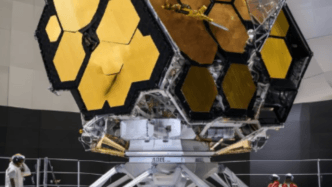Introduction: The Race to Mine Space
For centuries, humanity has relied on Earth’s resources to fuel industries, economies, and technological growth. However, as critical metals and minerals become scarce, scientists and entrepreneurs are looking beyond our planet—toward asteroid mining.
Asteroids, the rocky remnants of the early solar system, contain trillions of dollars worth of valuable metals, water ice, and rare elements. Companies and space agencies are now developing advanced robotics, artificial intelligence, and propulsion technologies to extract these resources. Could asteroid mining be the key to solving Earth’s resource crisis and launching the next era of space exploration?
Why Mine Asteroids?
1. The Scarcity of Earth’s Resources
Critical metals like gold, platinum, and rare earth elements are becoming harder to mine on Earth. The demand for these materials in industries like electronics, renewable energy, and aerospace is skyrocketing.
2. The Economic Potential of Space Mining
Asteroids contain vast amounts of untapped wealth. Just one metal-rich asteroid could hold more platinum than has ever been mined on Earth. If asteroid mining becomes cost-effective, it could create a multi-trillion-dollar industry.
3. Supporting Deep-Space Exploration
Mined resources, such as water ice, can be converted into rocket fuel (hydrogen and oxygen). This would allow spacecraft to refuel in space, making deep-space missions and colonization more feasible.
What Valuable Resources Do Asteroids Contain?
1. Precious Metals
- Platinum, gold, and palladium: Used in electronics and industrial applications.
- Rare earth elements: Essential for batteries, renewable energy, and high-tech devices.
2. Water Ice
- Found in C-type asteroids, water ice can be extracted and converted into drinking water and rocket fuel.
3. Industrial Metals
- Iron, nickel, and cobalt: Useful for constructing spacecraft and space habitats.
Types of Asteroids Suitable for Mining
| Asteroid Type | Resources Found | Potential Uses |
|---|---|---|
| C-type (Carbonaceous) | Water, carbon, organic compounds | Rocket fuel, life support |
| S-type (Silicaceous) | Nickel, iron, magnesium | Space manufacturing, industrial metals |
| M-type (Metallic) | Platinum, gold, rare metals | Electronics, fuel cells |
How Will Asteroid Mining Work?
1. Robotic Mining Operations
Autonomous robotic spacecraft will land on asteroids, drill into their surface, and extract resources. AI will play a crucial role in navigation, mining, and processing materials.
2. In-Situ Resource Utilization (ISRU)
Instead of transporting raw materials back to Earth, mined resources will be processed on-site. Water ice will be converted into fuel, and metals will be 3D-printed into components for spacecraft and space stations.
3. Transporting Resources
- Mined materials could be sent to Earth orbit for processing.
- Some resources may be used directly in space to build habitats, fuel stations, and infrastructure.
Recent Advances in Asteroid Mining Technology
AI and Automation
- AI-powered mining robots for autonomous resource extraction.
- Machine learning algorithms to identify the best asteroids for mining.
3D Printing in Space
- Metal extracted from asteroids can be turned into tools and spacecraft parts using zero-gravity 3D printing.
Advanced Propulsion
- Ion thrusters and nuclear propulsion are being developed to make asteroid mining missions more efficient.
Major Players in Asteroid Mining
1. NASA and Space Agencies
- NASA’s OSIRIS-REx mission successfully collected samples from asteroid Bennu.
- The European Space Agency (ESA) is studying asteroid mining feasibility.
2. Private Companies
- SpaceX: Developing Starship for deep-space mining operations.
- Blue Origin: Planning lunar resource extraction, which could extend to asteroids.
- Planetary Resources (now part of ConsenSys): Pioneered early asteroid mining concepts.
Challenges and Risks of Asteroid Mining
1. High Costs and Technology Barriers
- Developing the necessary spacecraft, mining robots, and transportation is extremely expensive.
2. Legal and Ethical Issues
- Who owns asteroid resources? International laws regarding space mining are still unclear.
3. Environmental and Safety Concerns
- Could asteroid mining disrupt natural orbits? What happens if an asteroid is accidentally redirected toward Earth?
When Will Asteroid Mining Become a Reality?
| Year | Milestone |
|---|---|
| 2025 | First robotic mining tests on the Moon |
| 2030 | First full-scale asteroid mining mission |
| 2040+ | Commercial asteroid mining becomes viable |
Conclusion
Asteroid mining is no longer just science fiction—it is a real possibility for the near future. With advances in robotics, AI, and propulsion systems, mining asteroids could revolutionize space exploration, economics, and sustainability.
While challenges remain, the potential rewards make asteroid mining a game-changer for humanity’s future.
FAQs
1. When will asteroid mining become a reality?
Experts predict the first commercial operations could begin by 2030-2040.
2. What are the most valuable resources found on asteroids?
Platinum, gold, rare earth elements, water ice, and industrial metals.
3. How will asteroid mining impact Earth’s economy?
It could reduce scarcity of critical metals and lower their costs.
4. What are the biggest challenges in space mining?
Cost, legal issues, and the difficulty of extracting and transporting resources.
5. Could asteroid mining help with space colonization?
Yes, by providing fuel, building materials, and life-supporting resources for deep-space missions.











